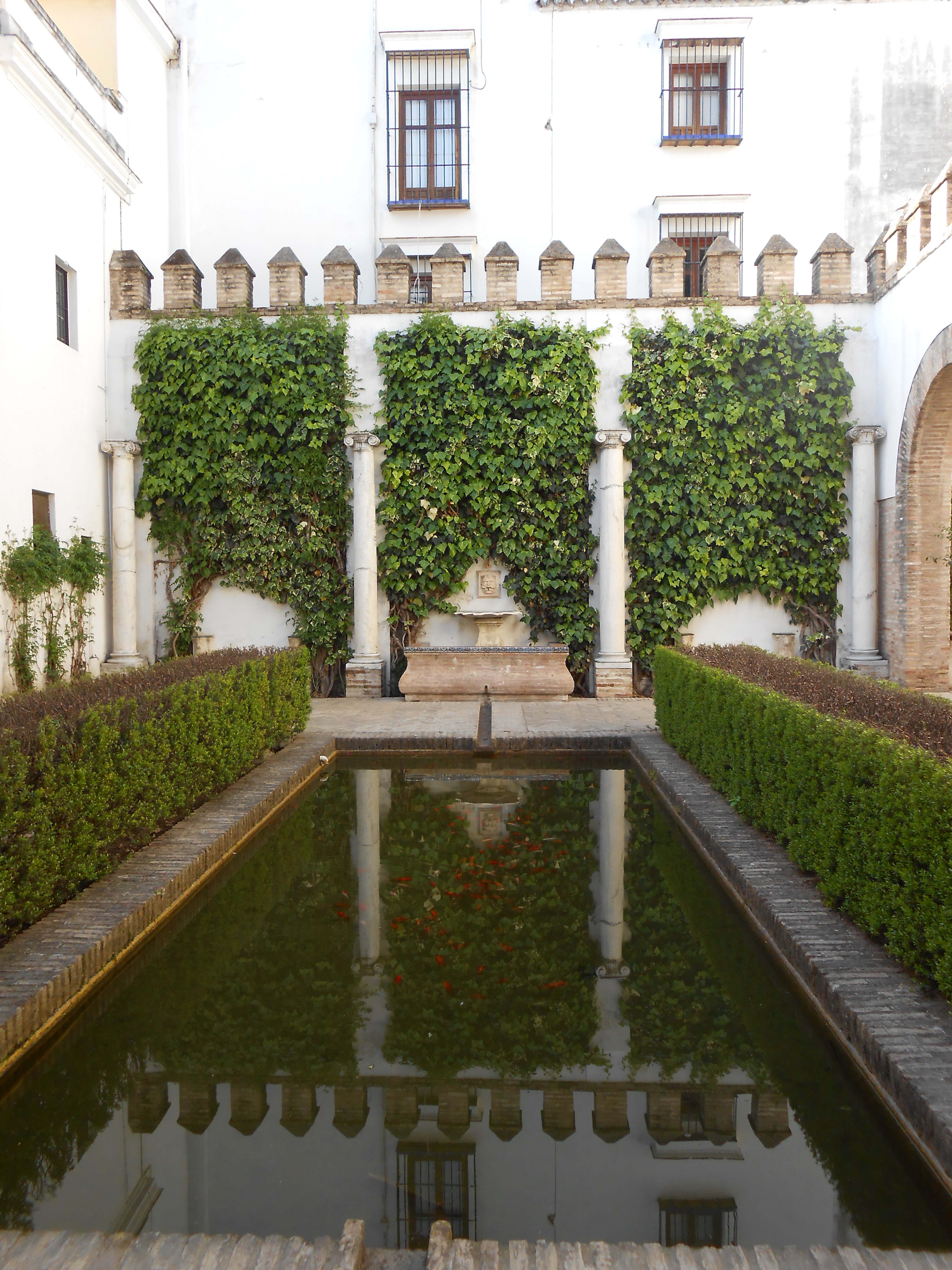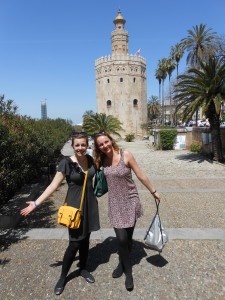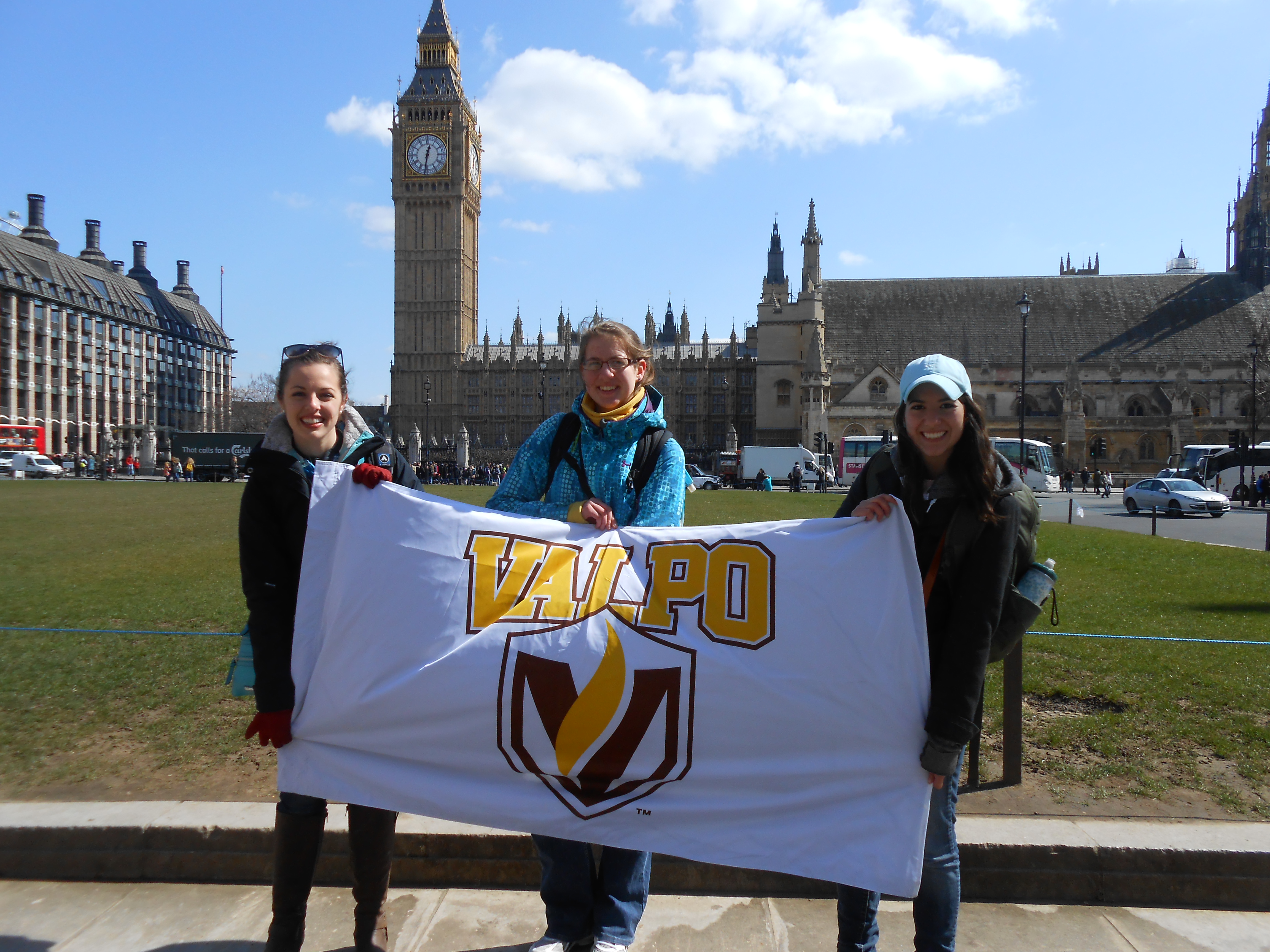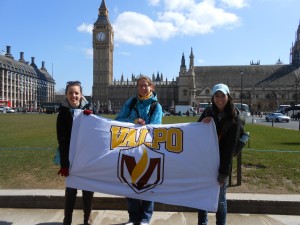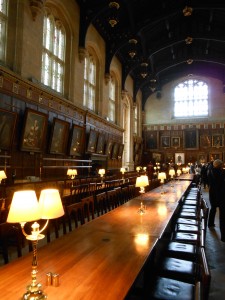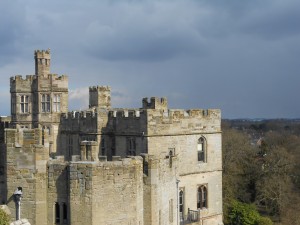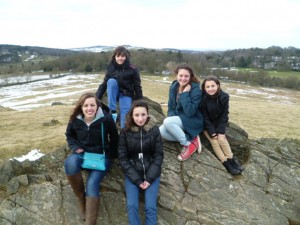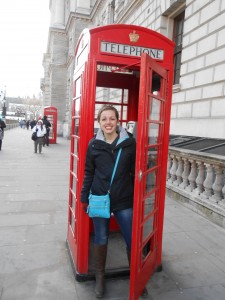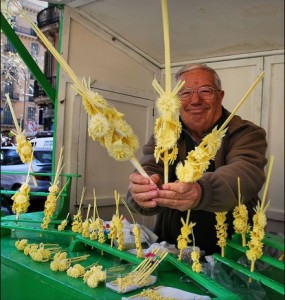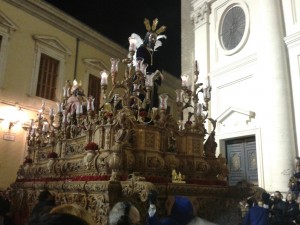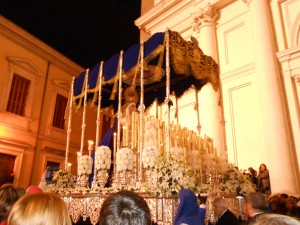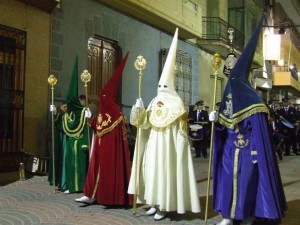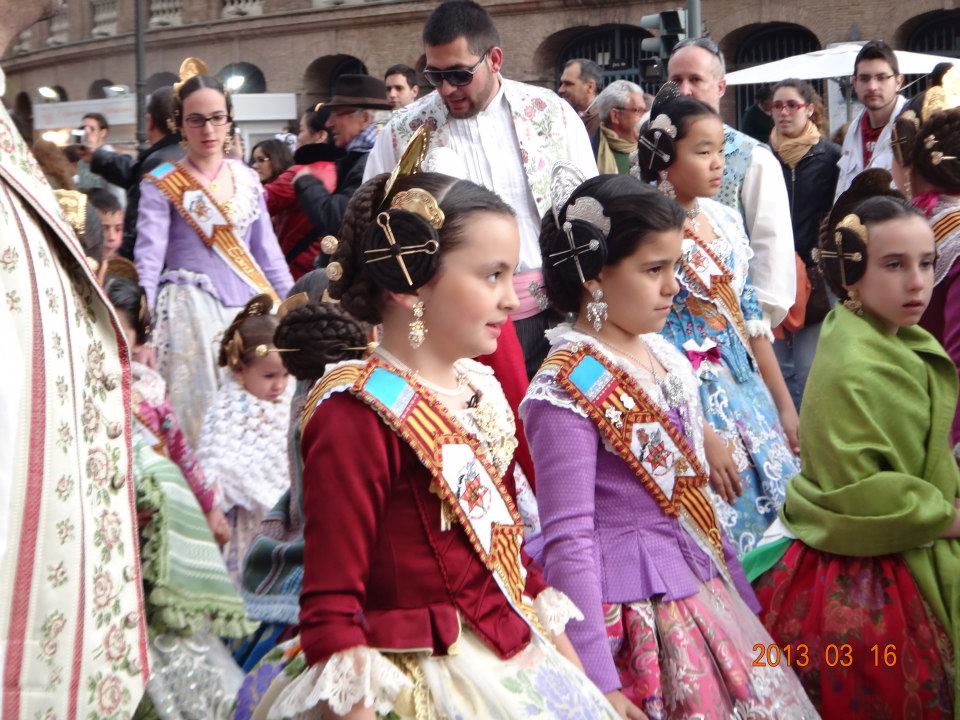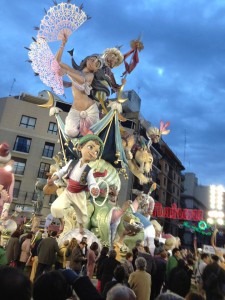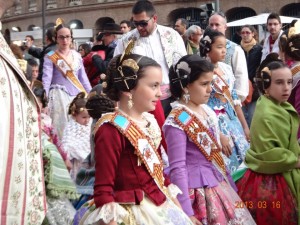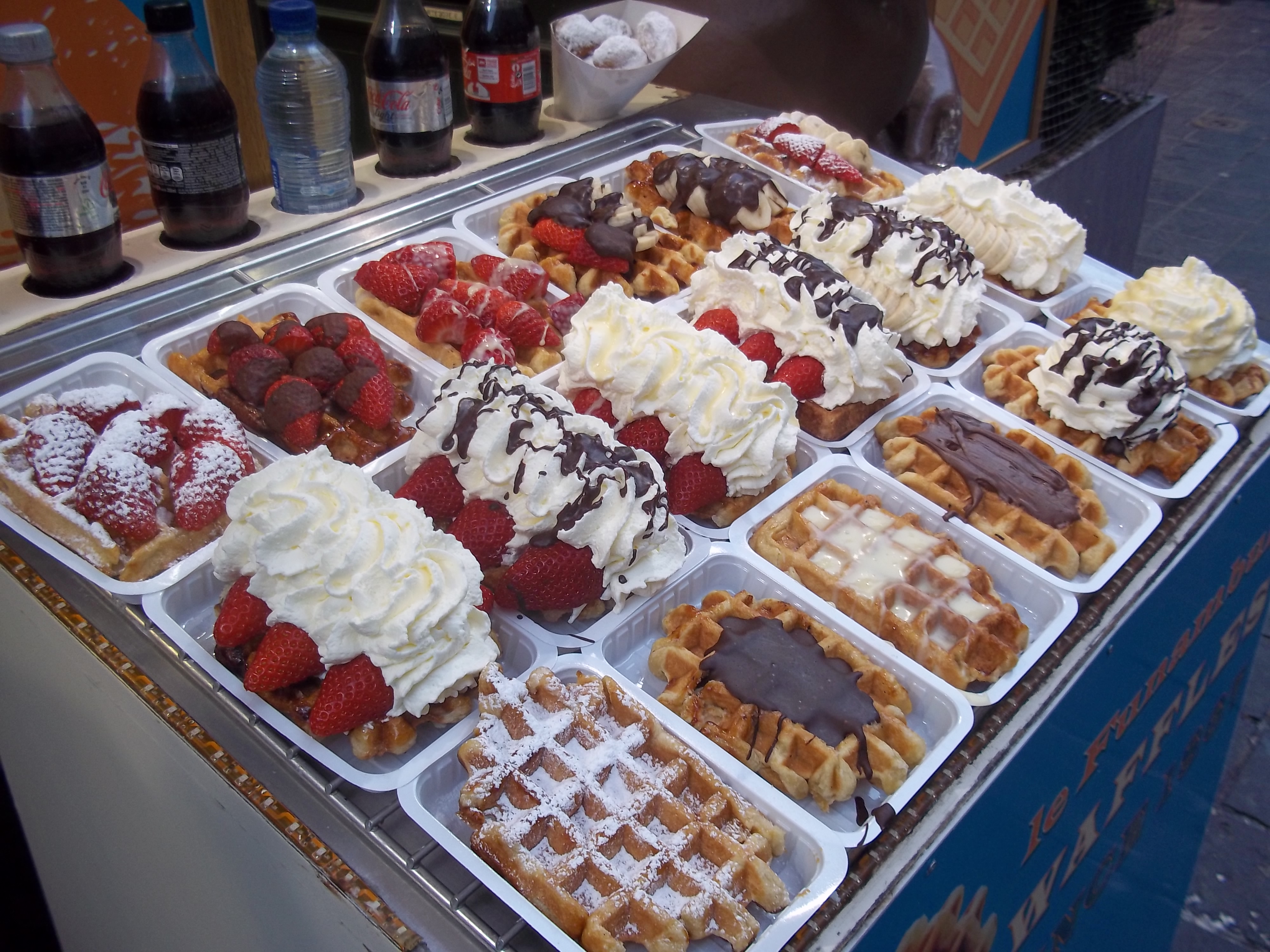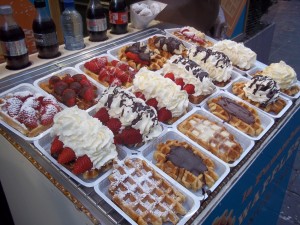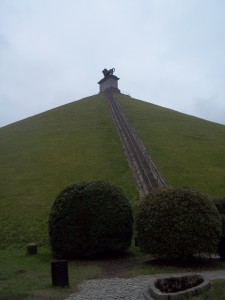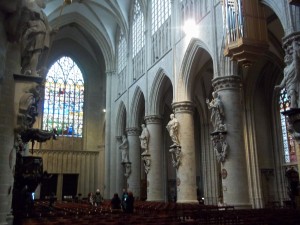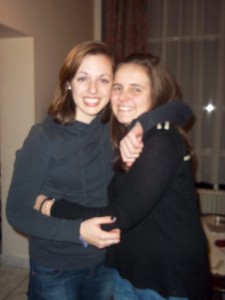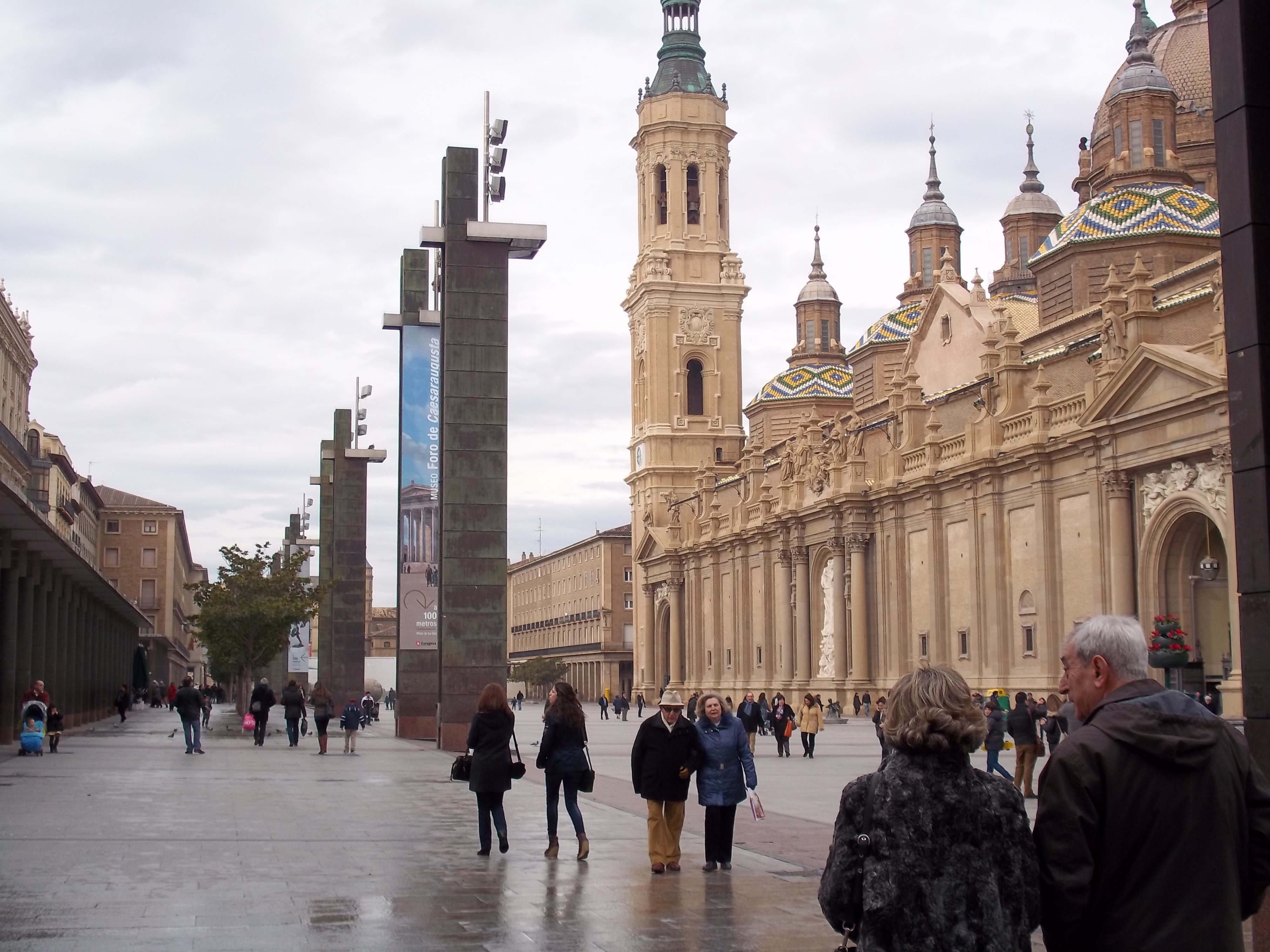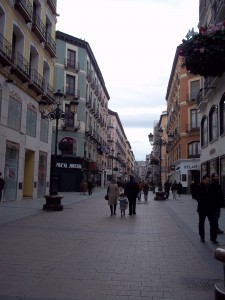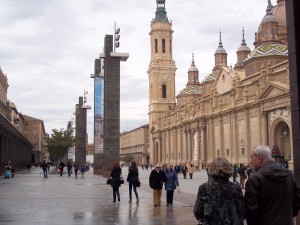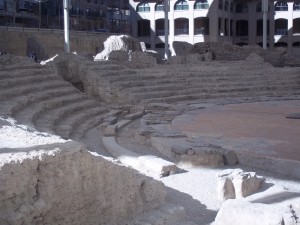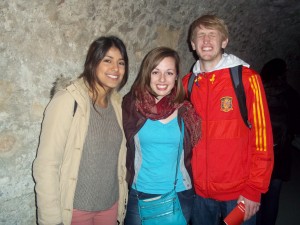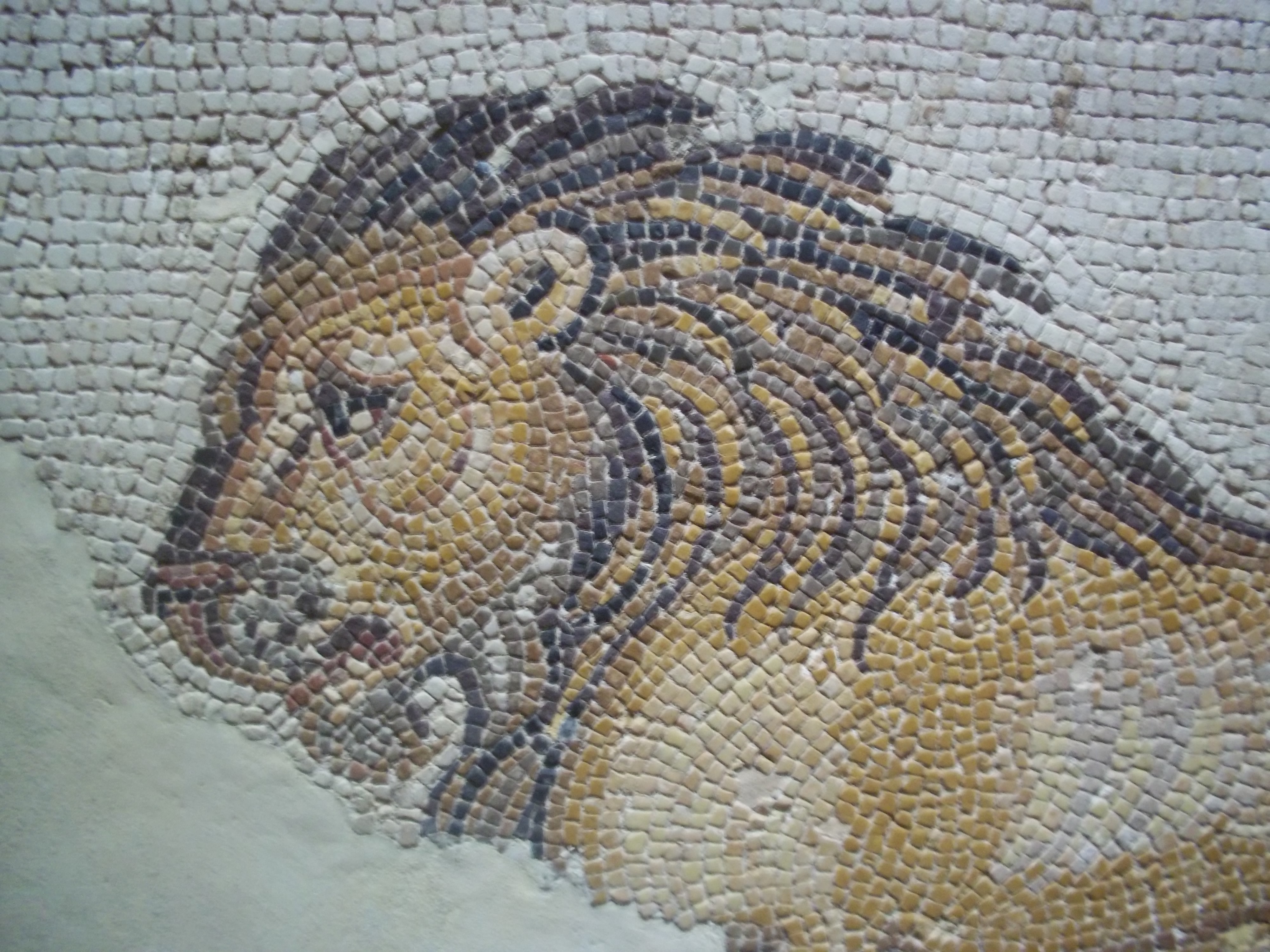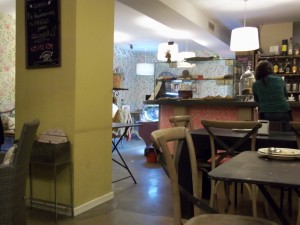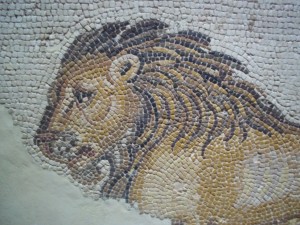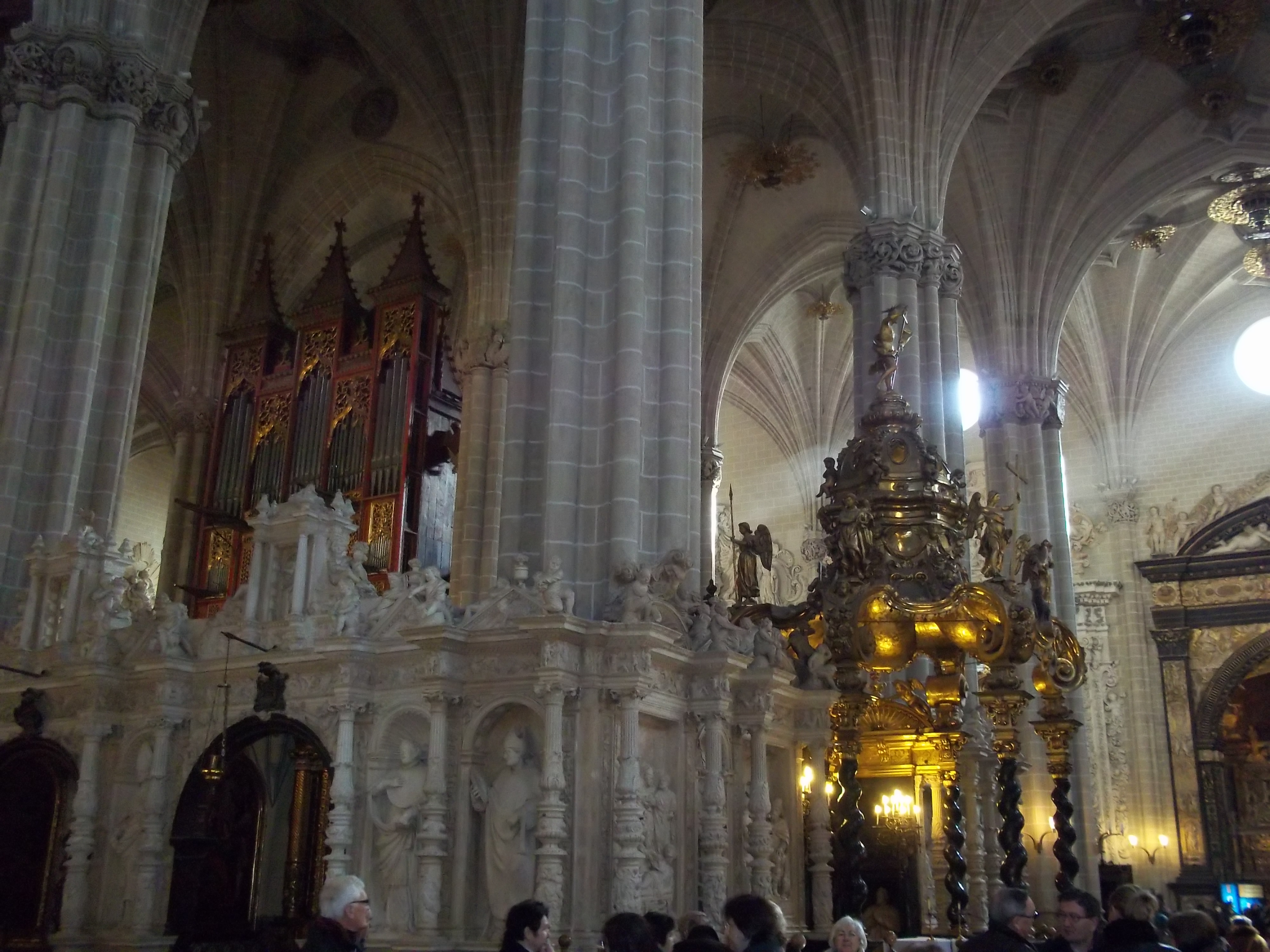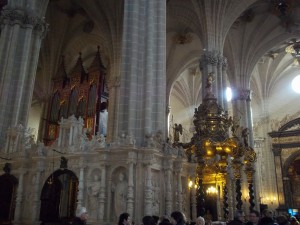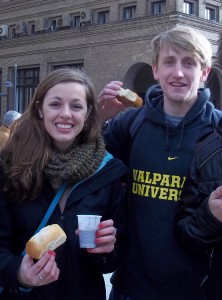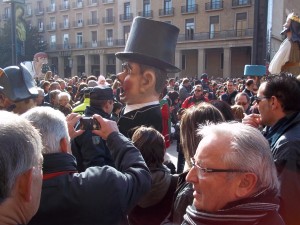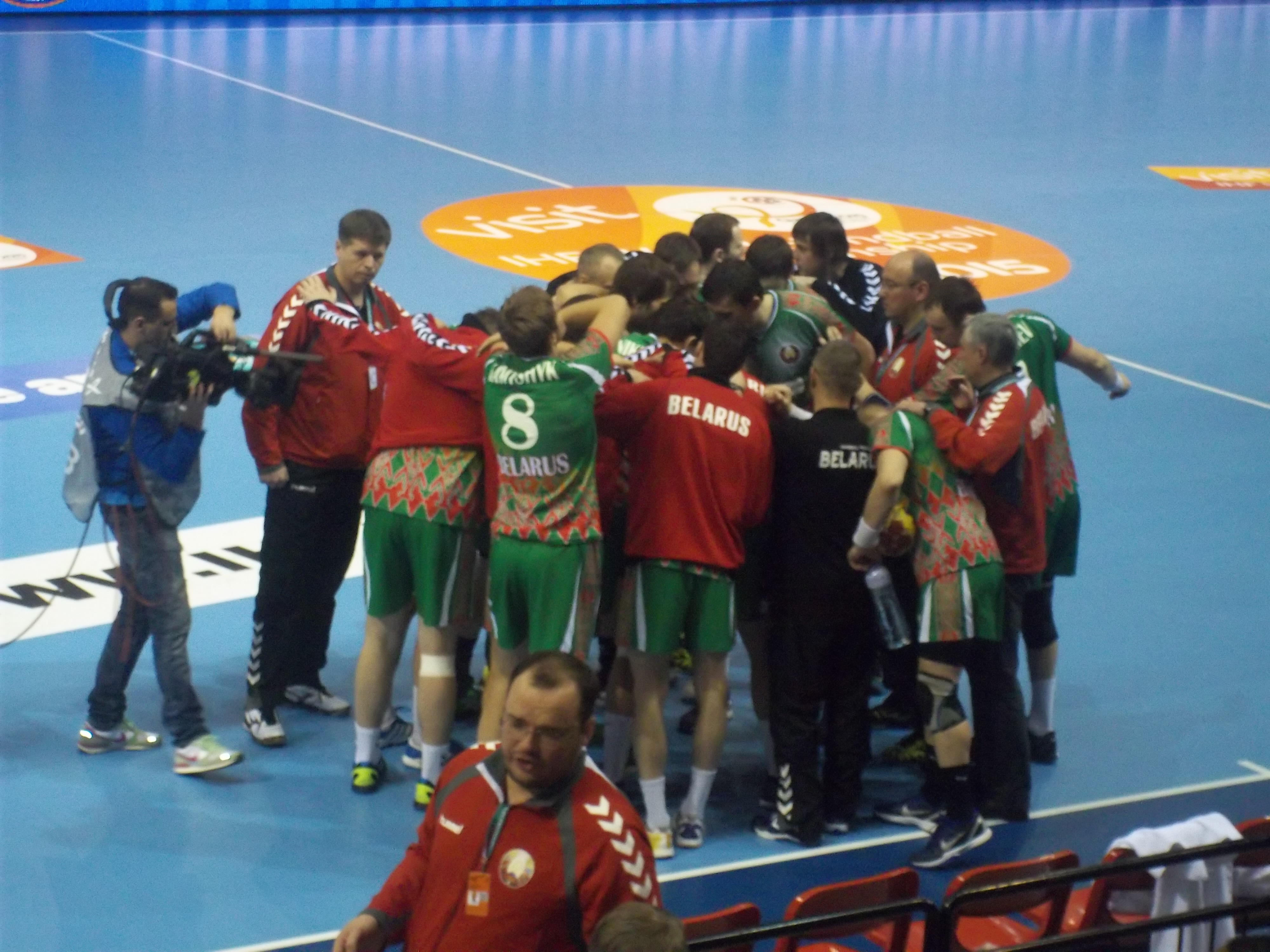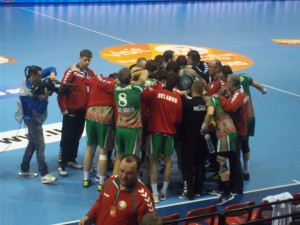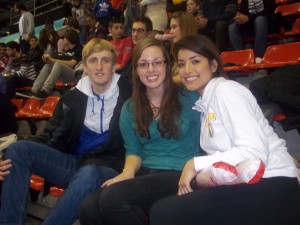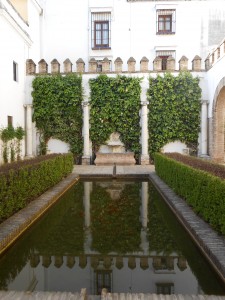
One of the many patios within the Real Alcázar, which was once a Moorish fort/palace. See the fishies in the reflection pool?
Okay, before I get started here, I’m going to warn you. I’m about to sound like a travel agent who’s sugarcoating everything in order to close a deal. I promise you, none of this is an exaggeration. Southern Spain is a world entirely of its own, and for lack of a better description, it’s magical. The air is filled with the smell of orange blossoms and the sounds of street musicians playing flamenco guitar, the sun shines in a bright blue sky until 8 pm. Wrought-iron balconies spill flowers out into winding narrow streets, ornate ceramic tiles adorn every door frame, and the clock slows down to match the laid-back, fun-loving lifestyle of the south. Words and pictures don’t do it justice, it’s just something you have to feel… but it exists and it’s definitely magical.
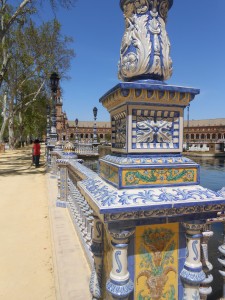
Ceramic tile work outside the Plaza de España. This kind of detail is part of almost every building in the city.
Seville is a city steeped in a rich and diverse history. Thus, its culture has developed over the centuries into a beautiful mix of flavors that is entirely unique to the south of Spain. Conquered by first the Romans, then the Moors, and then the Jewish and the Catholics, the city shows evidence on every corner of how it has aged and evolved over time. Take, for example, the Roman wall that surrounds the city center. After the Romans left, parts of the wall were incorporated into different structures, serving as a supporting wall of the Real Alcázar (one of my favorite places in Seville, a Moorish palace that is filled with acres of incredible gardens and patios), or even being built into houses. There are a number of houses that were built right onto the wall throughout the Moorish and Catholic reigns that still are inhabited today, covered in the intricate tile work common to the Moors and the close influence of Morocco and North Africa. And yet, they bear the family crests from the 1500s-era Catholic families that lived there centuries ago. This type of culture-blending is evident everywhere you look in Seville, and has since become a trademark of the city’s flavor.
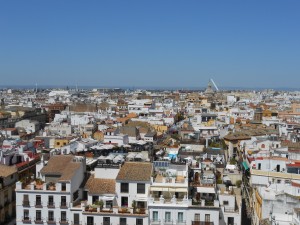
The breathtaking view of the city from the top of La Giralda, a 34-story tower attached the the Catedral de Sevilla.
The architecture isn’t the only thing about Seville that serves as a distinctive symbol, though. What brings the real magic to this city isn’t the buildings, but the people and their customs. The home of Flamenco, Sevillianos take their music, dancing, food, drink, and parties very seriously, and everything else kind of happens by its own time. Siestas are an even bigger deal here than in Zaragoza, and nobody’s ever in a rush (unless they’re talking. Understanding the Andaluz accent at the speed with which they talk was next to impossible!) I got hooked on the beauty and tradition of Flamenco while I was there, thanks to a few factors: trying on a traditional gown (I felt like a human Barbie doll!), watching a Flamenco dancing show over a pitcher of sangría, and perhaps most importantly, the buzz in the air regarding the upcoming Fería de Abril.
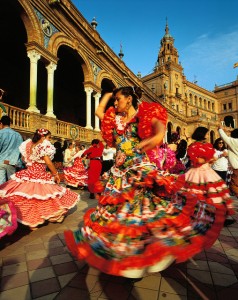
Alright. Obviously not my picture, since I missed the Fería. But this is what it looks like and is the reason why I was so enchanted.
The Fería started this past Tuesday, and is essentially a week-long dancing, eating, drinking, and socializing
extravaganza. At the edge of the city, they set up 1000+ massive tents, called “casetas”. Each caseta is an exclusive access facility, and you can only get in if you know a member (one of the group of people who are paying for the caseta to function at the Fería). Thus, it’s not unheard of for someone to be on the waiting list to be a caseta member for 30+ years. In each caseta are a bunch of tables, a dance floor, and a bar. Each day at the Fería, women dress in traditional Flamenco attire, and men will wear suits and ties. Dancing is a big part of the event, and the “Sevillana” style of dress, music, and dance dates back to the 1700s. We didn’t get to see the Fería in action, because we left Seville on Monday morning, but we did get to go to the fairgrounds and saw a caseta, thanks to a friend who has been living in Seville for six years.
One of the things I love most about Spain is the way that the Spanish have done such a great job preserving and celebrating their roots. Nothing gets washed away by history… the past is beautifully blended into the present in all aspects of life: culture, architecture, food, lifestyle. Seville is such an explicit and colorful example of that phenomenon, and I’m never going to forget the unending beauty of it all, and the way it swept me away to the point of being unable to convey it in words. I think this is my longest entry to date, and I’m still frustrated that my pictures and descriptions don’t do it justice. Guess that means that you all just have to find an excuse to go there and see for yourself…
